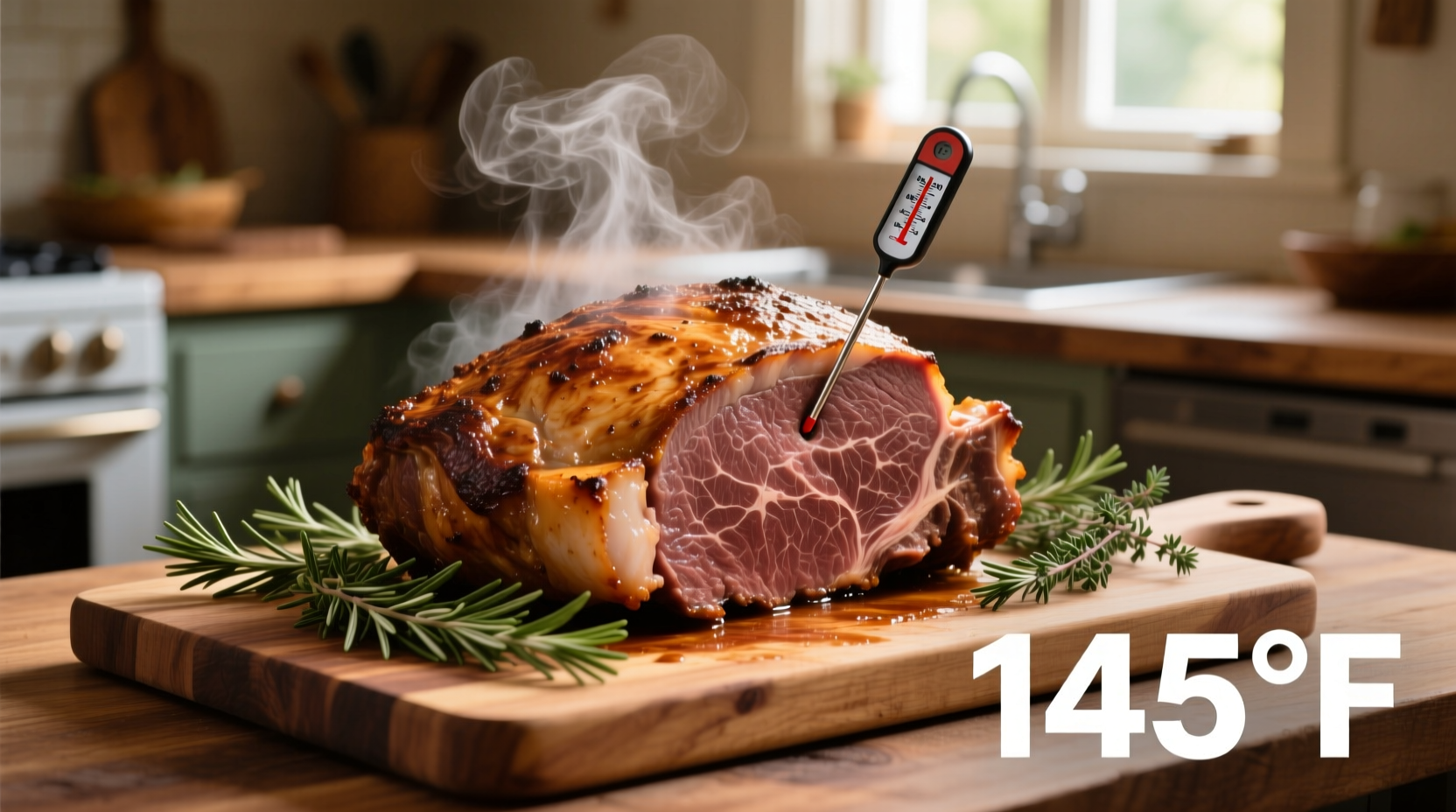Nothing beats the aroma of a perfectly roasted cut of meat filling your kitchen. But getting that ideal balance of juicy interior and crispy exterior requires understanding the variables that impact cooking time. This guide cuts through the confusion with precise timing guidelines based on scientific cooking principles and professional chef recommendations.
Why Roast Cooking Times Vary
Many home cooks make the mistake of relying solely on time estimates without considering critical factors that affect cooking duration. The USDA Food Safety and Inspection Service emphasizes that internal temperature, not time alone, determines doneness. Several elements influence how long your roast needs:
- Meat composition: Fat and connective tissue content significantly impact heat transfer
- Cut thickness: A thick rib roast cooks differently than a uniform tenderloin
- Oven accuracy: Most home ovens vary by 25°F from set temperature
- Starting temperature: Room-temperature meat cooks 20% faster than refrigerated
- Rack position: Middle rack provides most even heat distribution
| Roast Type | Weight | Oven Temp | Approx. Time | Target Temp |
|---|---|---|---|---|
| Beef Ribeye | 3-4 lbs | 325°F | 1.5-2 hours | 130-135°F (medium-rare) |
| Pork Loin | 3-4 lbs | 350°F | 1.75-2.25 hours | 145°F + 3 min rest |
| Lamb Leg | 4-5 lbs | 325°F | 2-2.5 hours | 140-145°F (medium) |
| Beef Brisket | 8-10 lbs | 275°F | 8-10 hours | 200-205°F (fork-tender) |
Your Roast Cooking Timeline: From Prep to Plate
Professional chefs follow a precise sequence that maximizes flavor development while ensuring food safety. This cooking timeline reflects current best practices endorsed by the American Culinary Federation:
- Preparation (30-60 minutes before cooking): Bring roast to room temperature, season, and sear if desired
- Initial cooking phase (first 30 minutes): Higher heat (400°F) creates flavorful crust
- Main cooking phase: Reduce to 325°F until internal temperature reaches 10-15°F below target
- Resting period (critical step): 15-30 minutes allows juices to redistribute
According to research from the Culinary Institute of America, proper resting time increases juiciness by up to 30%. During this period, the roast's internal temperature typically rises 5-10°F due to residual heat.
How to Determine Perfect Doneness
Forget unreliable methods like poking the meat or judging by cooking time alone. The USDA Food Safety and Inspection Service confirms that only a calibrated meat thermometer provides accurate doneness verification:
- Rare beef: 120-125°F (final 130°F after resting)
- Medium-rare: 125-130°F (final 135°F)
- Medium: 135-140°F (final 145°F)
- Pork/lamb: Minimum 145°F with 3-minute rest
- Poultry: 165°F throughout

Common Mistakes That Extend Cooking Time
Several preventable errors add unnecessary time to your roast preparation:
- Opening the oven too frequently: Each peek drops temperature by 25-50°F
- Incorrect rack position: Bottom rack causes uneven bottom browning
- Skipping the sear: Proper browning creates flavor and reduces overall cooking time
- Not accounting for carryover cooking: Roasts continue cooking during rest period
Pro Tips for Consistent Results
Professional chefs rely on these techniques to achieve perfect roasts every time:
- Use an oven thermometer to verify actual temperature
- Place roast fat-side up to self-baste during cooking
- Insert thermometer in thickest part, avoiding bone
- Calculate cooking time based on weight AFTER trimming excess fat
- For larger roasts, use a probe thermometer with remote alert
Remember that high-altitude cooking requires adjustments—above 3,000 feet, increase cooking time by 5-10% as water boils at lower temperatures. The National Center for Home Food Preservation provides detailed high-altitude cooking guidelines for precise adjustments.
Troubleshooting Common Roast Problems
When your roast isn't turning out as expected, these solutions can help:
- Dry meat: Likely overcooked or insufficient resting time—verify thermometer accuracy
- Raw spots: Uneven heat distribution—rotate pan halfway through cooking
- Burnt exterior: Oven running too hot—use independent oven thermometer
- Undercooked center: Roast too large for recommended time—always check internal temp
Conclusion: Mastering Roast Timing
While general time estimates provide a starting point, understanding the science behind roast cooking ensures consistent success. By monitoring internal temperature, accounting for variables, and allowing proper resting time, you'll transform your roast preparation from guesswork to precision. Remember that every oven and cut of meat behaves slightly differently—developing your intuition through practice is the final key to roast mastery.
How long does it take to cook a 5-pound beef roast?
A 5-pound beef roast typically requires 2.5-3.5 hours at 325°F, but actual time depends on cut and desired doneness. Always verify with a meat thermometer—remove at 125°F for medium-rare (temperature will rise to 135°F during 15-minute rest).
Should I cook roast at 325 or 350 degrees?
325°F provides more even cooking for larger roasts (over 3 pounds), while 350°F works better for smaller cuts. Higher temperatures risk over-browning the exterior before the interior reaches proper temperature. For most standard roasts, 325°F delivers optimal results.
How do I know when my roast is done without a thermometer?
While a thermometer is essential for accuracy, you can estimate doneness by touch: rare feels like the base of your thumb when touching index finger, medium-rare like middle finger, medium like ring finger. However, this method is unreliable for beginners and doesn't guarantee food safety.
Why does my roast take longer to cook than the recipe states?
Several factors cause extended cooking times: starting with cold meat, oven temperature inaccuracy, frequent oven door opening, or thicker-than-expected cut. Always rely on internal temperature rather than time alone for accurate doneness assessment.











 浙公网安备
33010002000092号
浙公网安备
33010002000092号 浙B2-20120091-4
浙B2-20120091-4